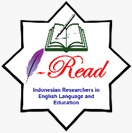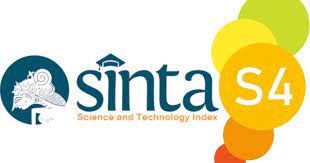Improving Student Reading Comprehension Through Question and Answer Relationships
DOI:
https://doi.org/10.22219/englie.v2i2.15681Keywords:
Reading Comprehension, Question and Answer Method, Techniques Reading SkillsAbstract
Reading comprehension is the ability to process text, understand the purpose of the text and integrate with what the reader knows. The ability of individuals to understand texts is influenced by their abilities and ability to process information. The method that researchers use in this study is the question and answer method in reading. So the teacher asks students to read a text, then after that the teacher holds a question and answer session in accordance with the reading text. The main research goals of the study is improving students reading comprehension skills with question and answer method. The implementation is doing in the classroom. After doing research with all 10th grade students, SMA Muhammadiyah 5 Jakarta. This question and answer method can make students become more diligent in reading and understanding every reading and questions given by the teacher, and for teachers, asked to provide more material and methods that can make students become more active and effective in each reading subjects. The result of is some students understand this method. And there are also students who do not like this method, but more students are successful and like this method.
Downloads
References
Alderson, J.C. (2000). Assessing reading. Cambridge University Press.
Anderson, M., & Anderson, K. (2010). Text types in English 3. Macmillan Education Australia.
Arikunto, S. 2006. Metode Penelitian Kualitatif. Bumi Aksara.
Bazerman, C, Bawarshi, A., & Reiff, M. J. (2013). Series Editors’ Preface. In A. S. Horning & E. W. Kraemer (Eds.), Reconnecting Reading and Writing (p. 325). Anderson SC: Parlor Press.
Brown, H. D. (2004). Language assessment: principles and classroom Practices. New York: Pearson Education, Inc.
Grabe, W., & Stoller, F. L. (2011). Teaching and researching reading. Routledge.
Hadi, M. S. (2019). The use of song in teaching English for junior high school student. English Language in Focus (ELIF), 1(2), 107–112.
Lisandy, N., & Adijaya, N. (2019). The effectiveness of using collaborative strategic reading (csr) on students’ reading comprehension of narrative text. English Language in Focus (ELIF), 2(1), 53-58.
McDonough, J., & Shaw, C. (2012). Materials and methods in ELT: A Teacher’s guide. Wiley: Blackwell Pub.
Mikeladze, T. (2014). Extensive reading (N. Dogonadze, Ed.). Retrieved from https://www.researchgate.net/publication/280878633_Extensive_Reading.
Mutiarani, & Rahman, I. A. (2019). Theme based instruction model in teaching extensive reading. English Language in Focus (ELIF), 2(1), 43–52.
Nuttal, C. 1988. Teaching reading skills in a foreign language. Oxford: Heinemann International Publishing.
Partin, Roland L. 2005. Classroom teacher’ s survival guide (second edition). A Wiley Imprint.
Risdianto, F. 2012. Effective and efficient reading. solo: Rustam Publisher.
Smarapradhipa, G. 2005. Bertutur dalam tulisan. Raya Kultura.
Wahyu, W. 2001. Management Bahasa. Jakarta: Gramedia.
Snow, C. E. (2012). Reading for understanding: toward an r&d program in reading comprehension. RAND Corporation.
Wenden, A. L. (1987). Metacognition: An expanded view on the cognitive abilities of L2 learners. Language Learning, 37 (4), 573-594.
Downloads
Published
How to Cite
Issue
Section
License
Copyright (c) 2021 Hanny Kusuma

This work is licensed under a Creative Commons Attribution-ShareAlike 4.0 International License.
Authors who publish with English Learning Innovation (englie) agree to the following terms:
- For all articles published in English Learning Innovation (englie), copyright is retained by the authors. Authors give permission to the publisher to announce the work with conditions. When the manuscript is accepted for publication, the authors agree to automatic transfer of the publishing right to the publisher.
- Authors retain copyright and grant the journal right of first publication with the work simultaneously licensed under a Creative Commons Attribution-ShareAlike 4.0 International License that allows others to share the work with an acknowledgement of the work's authorship and initial publication in this journal.
- Authors are able to enter into separate, additional contractual arrangements for the non-exclusive distribution of the journal's published version of the work (e.g., post it to an institutional repository or publish it in a book), with an acknowledgment of its initial publication in this journal.
- Authors are permitted and encouraged to post their work online (e.g., in institutional repositories or on their website) prior to and during the submission process, as it can lead to productive exchanges, as well as earlier and greater citation of published work (See The Effect of Open Access).
This work is licensed under a Creative Commons Attribution-ShareAlike 4.0 International License.

















1.png)












